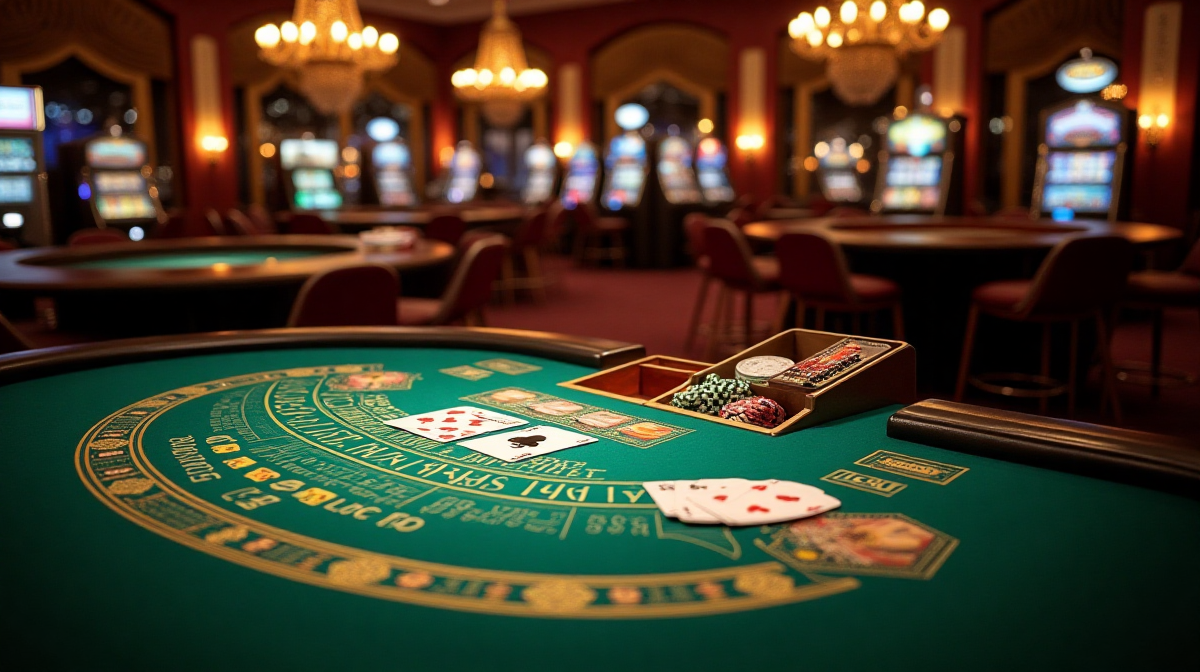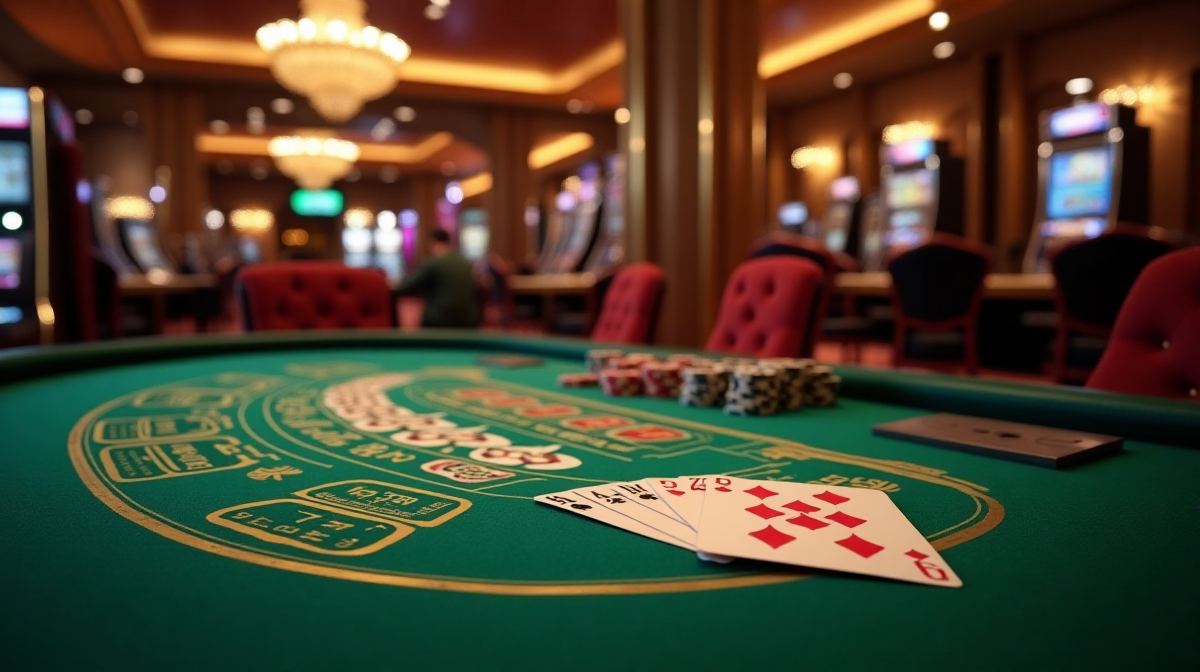Blackjack Dealer Rules: A Beginner's Guide
What is Blackjack? – A Quick Overview
Blackjack, also known as 21, is a casino game where players compete against the dealer to get a hand value as close to 21 as possible without exceeding it. The game's appeal lies in its blend of chance and skill – players can make strategic decisions to improve their odds. For those looking to explore online options, platforms like GoldsBet offer a convenient way to enjoy the game. Understanding the rules, especially those governing the dealer, is fundamental to success.
The Dealer's Primary Responsibility: Following the Rules
The dealer’s role in blackjack isn’t about outsmarting players; it’s about consistently and accurately following a strict set of rules. These rules dictate when the dealer must hit (take another card) and when they must stand (stop taking cards). These rules are standardized to ensure fairness and maintain the house edge. Players interested in mobile gaming might want to consider a goldsbet download apk for android to access the game on the go.

Why Understanding Dealer Rules is Crucial for Players
Knowing the dealer's rules is paramount because it directly impacts your optimal playing strategy. Different casinos have different rules, and understanding these nuances can significantly influence your chances of winning. Whether you’re playing a classic game or a variation like rummy goldsbet, grasping the foundations of blackjack is key.
The “Stand on 17” Rule: A Detailed Explanation
The most common dealer rule is the stand on 17 rule. This means the dealer must stop hitting once their hand totals 17 or more. This rule is in place to give the house a slight edge.
Soft 17 – Hit or Stand?
A crucial variation involves soft 17. A soft 17 is a hand containing an Ace counted as 11, along with cards totaling 6. Some casinos require the dealer to hit on a soft 17 (H17), while others require them to stand (S17). This single rule change considerably affects the house edge and player strategy.

Why the 17 Rule Exists: House Edge and Game Balance
The 17 rule is a cornerstone of blackjack's design, ensuring the casino maintains a statistical advantage. Without it, players could potentially exploit the game, reducing the casino’s profitability. It’s all about game balance and managing risk.
Impact on Player Strategy: Adjusting Play Based on Dealer's Rules
The dealer's rule regarding soft 17 dramatically alters basic strategy. Against a dealer hitting on soft 17, players need to be more conservative with their hands. You can find helpful charts outlining optimal plays based on these variations. Thinking about strategy can also enhance your enjoyment on platforms like GoldsBet.
Understanding a “Soft” Hand
A soft hand is one where the Ace can be counted as either 1 or 11 without busting. This flexibility gives players options, but the dealer's handling of soft hands is equally important to understand.
Dealer’s Response to Soft 17
As mentioned, the dealer’s response to a soft 17 is the most significant rule variation. H17 (hitting) increases the house edge, while S17 (standing) favors the player slightly. Always confirm the rule before playing. Understanding the blackjack skema – the underlying probability calculations – reinforces why this rule is so impactful.
The Importance of Knowing the Specific Casino's Soft 17 Rule
Before you place a bet, always verify whether the casino uses H17 or S17. This information is usually displayed on the table or easily obtainable from the dealer. Ignoring this rule can lead to suboptimal play and reduced winnings.
Why Soft 17 Rules Matter to Basic Strategy
Basic strategy charts are tailored to specific dealer rules. Using a chart designed for S17 at a casino using H17 will lead to incorrect decisions. Card counters also need to adjust their play based on the dealer's soft 17 rule, as it affects the expected value of different counts.
Dealing the Cards: Initial Deal & Player Turns
The dealer begins by dealing two cards face up to each player and two cards to themselves – one face up and one face down. Players then take turns deciding whether to hit, stand, double down, or split.
Dealer's Turn: When and How It Happens
Once all players have completed their turns, the dealer reveals their face-down card. The dealer then follows the predetermined rules, hitting or standing based on their hand total.
Hitting: Dealer Taking Another Card
If the dealer’s hand total is less than 17 (or less than the specified limit for soft hands), they must hit. They continue to hit until they reach 17 or more.
Standing: Dealer Stopping Their Turn
Once the dealer reaches 17 or more, they must stand. They will not take any further cards, regardless of the player's hands.
Busting – What Happens When the Dealer Goes Over 21
If the dealer’s hand exceeds 21, they “bust” and all remaining players win.
Communication with the Dealer: What's Allowed and What's Not
Verbal communication with the dealer is generally limited to making playing decisions (“hit,” “stand,” “double down,” “split”). Excessive chatter or attempts to influence the dealer are usually discouraged.
Handling Disputes: What to Do if You Disagree with a Call
If you believe the dealer has made an error, politely bring it to their attention. The dealer will typically consult with a pit boss to resolve the issue.
Dealing with Blackjack : Payouts & Procedure
If a player receives an Ace and a ten-value card (10, Jack, Queen, King) on their initial deal, they have a “blackjack” or “natural 21.” This typically pays out 3:2, unless the dealer also has blackjack, in which case it's a push (tie).
Insurance Bets: Dealer's Role & Player Considerations
When the dealer's upcard is an Ace, players are offered insurance – a side bet that the dealer has blackjack. The dealer facilitates this bet, but it’s generally considered a poor bet for the player.
How Dealer Rules Affect Optimal Player Decisions
Dealer rules are intrinsically linked to basic strategy. For example, against a dealer hitting on soft 17, you would adjust your strategy to be more cautious, standing on lower totals than you would against a dealer standing on soft 17.
Using Basic Strategy Charts – Knowing When to Hit, Stand, Double Down, & Split
Basic strategy charts provide optimal playing decisions based on your hand and the dealer's upcard, taking into account the specific dealer rules. These charts are readily available online and are a valuable tool for improving your game. Even when enjoying blackjack skema variations, a solid understanding of basic strategy remains crucial.
The Importance of Adapting Basic Strategy to Dealer Rules
Never assume that basic strategy is universal. Always tailor your play to the specific dealer rules in effect at the casino.
Resources for Learning Basic Strategy & Dealer Rule Variations
Numerous websites and books offer detailed explanations of basic strategy and dealer rule variations.
Card Counting & Its Impact on Dealer's Actions
Card counting involves tracking the ratio of high to low cards remaining in the deck. This information can give players an edge, but it's often discouraged by casinos. The dealer's actions remain consistent regardless of card counting, but savvy counters adjust their bets accordingly.
Casino Surveillance & Detecting Deviations from Basic Strategy
Casinos employ surveillance technology and trained personnel to monitor players for deviations from basic strategy, which can indicate card counting or other advantage-playing techniques.
Understanding Penetration and Multiple Decks
Penetration refers to how deeply into the deck the dealer deals before shuffling. Multiple decks are used to make card counting more difficult.
Different Blackjack Variations & Their Impact on Dealer Rules
Various blackjack variations exist, each with its own set of rules. Some variations may alter the dealer's rules, requiring players to adapt their strategy accordingly. Platforms like GoldsBet sometimes offer these variations, so it’s always good to familiarize yourself with the specific rules before playing.

